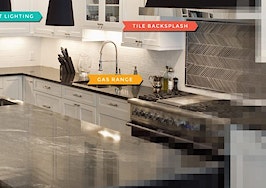- Zillow announced the development of a "neural network" that allows computers to dissect and identify features in an image the same way humans do.
- This network will be used to better identify and tag a home's features, such as granite countertops, a large backyard and wood floors.
- This high-tech tagging system is expected to increase the accuracy of Zillow's Zestimates.
Human brains can capture and analyze hundreds of thousands of data points in seconds — which is one of many reasons why a human appraiser often puts online valuations to shame in terms of accuracy.
Zillow is building its own version of human intelligence into its listings and online valuation tool, the Zestimate — dubbed a “neural network,” it will allow machines to identify such niceties as the type of cabinet and countertops used in the kitchen and adjust the home’s value accordingly.
Computer vision technology teaches computers to view, dissect and understand images, and then automatically identify and tag features that would be attractive to a potential buyer, such as granite countertops, high ceilings and french doors.
In March, RealScout founder and CEO Andrew Flachner explained his company’s use of the same technology, saying: “Homebuyers don’t measure ‘home’ in square feet.
“Instead, my buyer clients described their home preferences in terms of large backyards, open floor plans and lots of natural light.”
Flachner noted real estate’s usage of the technology is still in its early days, but argued that with correct use, it can substantially streamline and quicken the online home search process.
“Agents and brokers who effectively integrate these technologies will be able to better cater to their clients’ needs, and will naturally be in higher demand,” he said.
Trulia has already employed computer vision technology; Inman will update this story with more information about how or whether Trulia’s computer vision tools will be different from Zillow’s neural network when it becomes available.
Zillow Group Chief Economist Stan Humphries told The Wall Street Journal the “neural network” will be in use by Q1 2017, and it is expected to lower the current 4.5 percent Zestimate valuation error rate.






